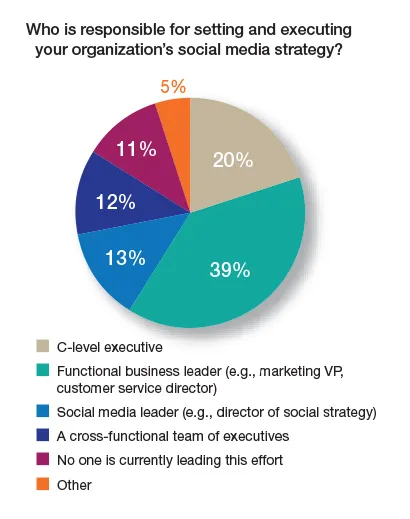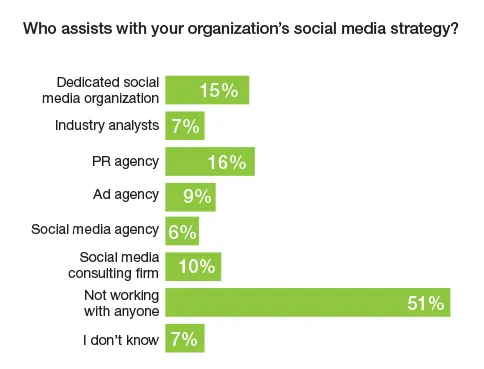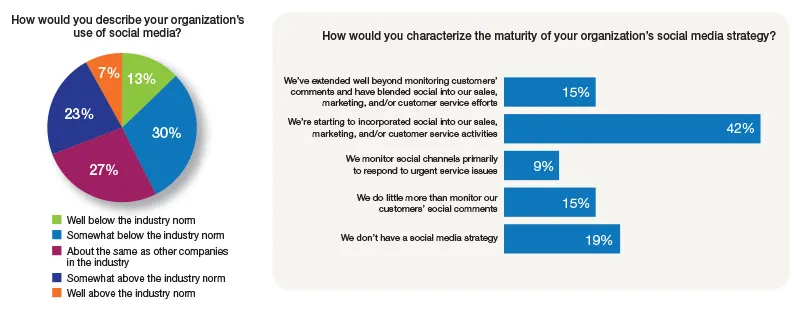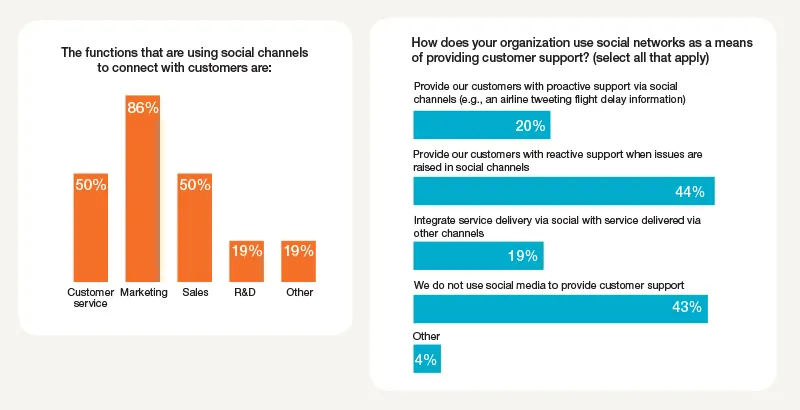Most business leaders recognize social as a critical channel for strengthening customer relationships. But many struggle with defining their organization's social strategies.
According to the "2011 Social Strategies" study, from Peppers & Rogers Group and Temkin Group, 43 percent of respondents characterize their organization's use of social media as "well below" or "somewhat below" the industry norm.
The study, which reveals the current state of social strategy and execution at customer-focused organizations of varying sizes and across industries, finds that, for most, social is very much a work in progress. "Business leaders have become confused and overwhelmed when it comes to setting a social media strategy," says Bruce Temkin, managing partner of Temkin Group.
Marketing leads all other functions, including sales and customer service, when it comes to using social channels to connect with customers, according to the study. But that doesn't mean companies should view social as another set of marketing or sales channels, cautions Peppers & Rogers Group Founding Partner Don Peppers.
"The failure to participate in discussions with customers and listen closely to what they're are saying is the number one mistake companies make when they jump into social," he says.
Who "Owns" Social?
There's no right or wrong answer to the question, who owns social? But the prevailing wisdom among many industry experts is that no one person or function within an organization should "own" it. Nonetheless, the "2011 Social Strategies" study finds that social media efforts are predominantly led by functional leaders such as CMOs or customer service directors.


Room for Improvement
Although a growing number of organizations have begun extending their use of social channels throughout their sales, marketing, and customer service efforts, many companies still have relatively immature social strategies. For instance, one third of survey respondents say their companies either don’t have a social strategy at all or do little more than monitor customers’ social comments. This is a problem that starts at the top of many organizations where senior executives don’t use social channels that are popular among the frontline staff, says Donna Marie Antoniadis, cofounder and CEO of She’s Connected Multimedia Corp. “If the executive team isn’t in social media, it’s difficult to sell from the bottom up,” Antoniadis says.

Opportunities for Using Social
Nearly 90 percent of respondents use social media for marketing, but only half use it for customer service. When it comes to marketing, although online promotions get most of the buzz, posting content is more popular, with 44 percent offering the former and 71 percent providing the latter. Additionally, 44 percent of respondents use social networks as a means to provide reactive customer support when issues are raised in social channels such as Twitter.
Still, many companies are overlooking opportunities to leverage their connections with customers on social networks to develop deeper, more meaningful relationships. For example, only 20 percent of respondents use social to provide customers with proactive customer service (e.g., an airline tweeting about a flight delay). Providing customers with useful information that anticipates their needs and preferences demonstrates that a company has their best interests in mind, Peppers says. These types of actions can strengthen customer loyalty and lead to increased customer value, including recommendations and referrals to friends and family.

Putting a Face on the Social Organization
According to the results of the “2011 Social Strategies” study, about two thirds of companies encourage both customer-facing and non–customer-facing employees to use social channels. Yet, less than half of respondents’ companies provide employees with social media training.
“Companies should identify customer-facing employees who have the right skills to connect with customers via social,” says Don Peppers, founding partner at Peppers & Rogers Group. Although some employees are well-versed on the use of social media, Peppers recommends offering all employees training to help increase their acumen in interacting with customers via these sites.


















